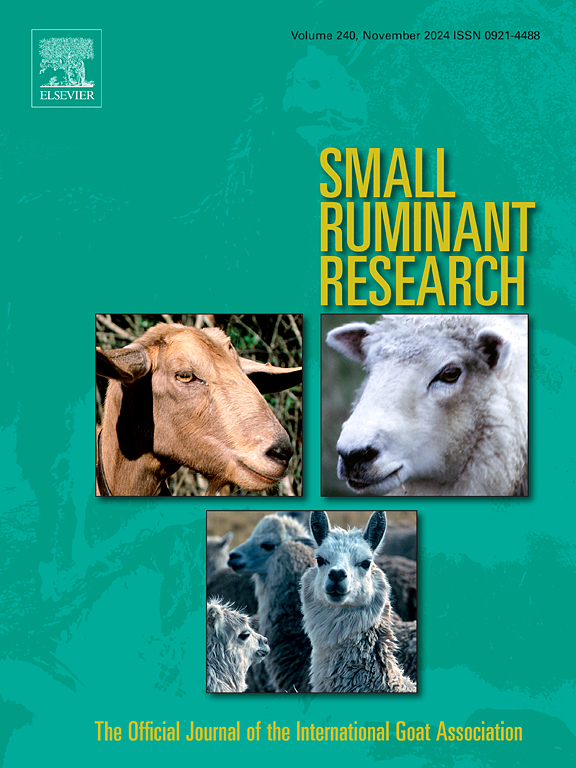良好的管理实践和技术异质性:对秘鲁绵羊养殖技术效率的影响
IF 1.6
3区 农林科学
Q2 AGRICULTURE, DAIRY & ANIMAL SCIENCE
引用次数: 0
摘要
本文考察了采用良好管理规范(GMP)对秘鲁绵羊养殖场技术效率(TE)的影响,考虑到不同GMP采用模式导致的技术异质性。利用2022年秘鲁国家农业调查的数据,根据创新扩散理论,通过层次聚类分析,对943名牧羊农户进行了GMP采用阶段的分类。然后应用随机元前沿分析来评估每组的效率,并将其与行业范围内的“最佳实践”标准进行比较。研究结果表明,采用GMP与技术效率之间存在正相关关系,处于GMP采用后期的养殖场效率最高;然而,这些农场只经历了边际效率的提高,这表明采用更先进的gmp并没有显著扩大生产边界。在这些后期采用者中,组内TE分数的相对较高的可变性可能表明学习曲线,导致生产风险增加。此外,组内TE分数被发现是整体(或元技术)效率的主要驱动因素,这意味着低效率更多地源于管理缺陷而不是技术约束。这突出了加强管理做法的必要性。该研究的结论是,采用GMP的各个阶段的农场都有利用现有资源提高效率的巨大空间,并建议政策制定者和推广服务侧重于帮助农民更好地利用现有的GMP技术,同时推广先进的做法,以降低潜在的调整成本。本文章由计算机程序翻译,如有差异,请以英文原文为准。
Good management practices and technological heterogeneity: Impacts on technical efficiency in Peruvian sheep farming
This paper examines the effects of adopting Good Management Practices (GMPs) on the technical efficiency (TE) of Peruvian sheep farms, considering the technological heterogeneity resulting from diverse GMP adoption patterns. Using data from the 2022 Peruvian National Agricultural Survey, 943 sheep farmers were classified according to their GMP adoption stages through hierarchical cluster analysis, in line with the Diffusion of Innovation theory. Stochastic meta-frontier analyses were then applied to assess efficiency within each group, comparing them to industry-wide "best-practice" standards. The findings reveal a positive relationship between GMP adoption and technical efficiency, with farms in advanced GMP adoption stages showing the highest efficiency levels; however, these farms experienced only marginal efficiency gains, suggesting that adopting more advanced GMPs did not significantly expand the production frontier. The relatively high variability in within-group TE scores among these later adopters may indicate a learning curve, contributing to increased production risks. Moreover, within-group TE scores were found to be the primary drivers of overall (or meta technical) efficiency, implying that inefficiencies stem more from management shortcomings than from technological constraints. This highlights the need to enhance management practices. The study concludes that farms at all stages of GMP adoption have significant room to improve efficiency with current resources and recommends that policymakers and extension services focus on helping farmers better utilize existing GMP technologies while promoting advanced practices to reduce potential adjustment costs.
求助全文
通过发布文献求助,成功后即可免费获取论文全文。
去求助
来源期刊

Small Ruminant Research
农林科学-奶制品与动物科学
CiteScore
3.10
自引率
11.10%
发文量
210
审稿时长
12.5 weeks
期刊介绍:
Small Ruminant Research publishes original, basic and applied research articles, technical notes, and review articles on research relating to goats, sheep, deer, the New World camelids llama, alpaca, vicuna and guanaco, and the Old World camels.
Topics covered include nutrition, physiology, anatomy, genetics, microbiology, ethology, product technology, socio-economics, management, sustainability and environment, veterinary medicine and husbandry engineering.
 求助内容:
求助内容: 应助结果提醒方式:
应助结果提醒方式:


